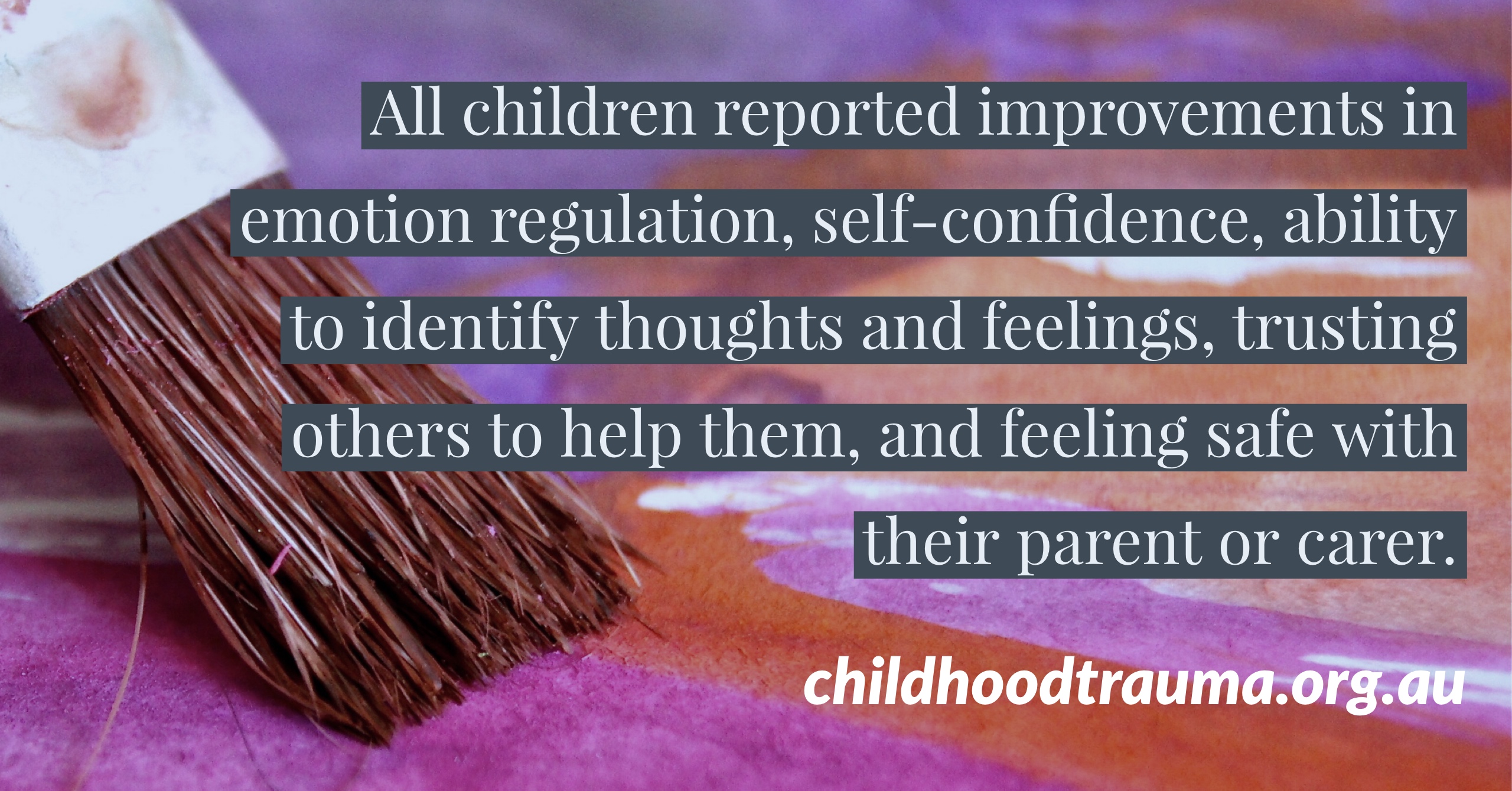
‘Yarn and Calm’ – A Pilot Group Program for Children with Complex Trauma

This blog entry was authored by Dr Angela Curcio and Tej Kaur,
Melaleuca Place, Canberra, Australian Capital Territory (ACT), Australia
Integrating art and play therapy approaches in group work with traumatised children.
Becoming operational in July 2014, Melaleuca Place is a multidisciplinary ACT government service designed to provide assessment and intervention services to children (aged 0-12 years) who are current clients of statutory services and who have a history of complex trauma. As you may be aware, complex trauma results from a child’s repeated and prolonged exposure to multiple traumatic events that are often interpersonal in nature and occur within the child’s care giving system, such as physical, sexual, and/or emotional abuse, and neglect.
What does the research say?
The increased use and availability of medical imaging technologies has furthered our understanding of how the brain is altered following prolonged exposure to trauma and stress. There is now growing evidence that persistently elevated levels of the stress hormone cortisol can disrupt the developing architecture of the brain, including its size. This can contribute to permanent changes in brain structure and function, including difficulties in learning, memory, and executive functioning, regression in previously acquired skills, and cognitive and/or developmental delays. Also evident are sleeping and eating disruptions, increased tension, irritability, and an over-active startle response. The child often exhibits fight, flight or freeze (commonly known as dissociation or shut down) responses. Poor identity formation, an impaired sense of self, and social difficulties are also common.
These developments have coincided with the emergence of relatively new theoretical frameworks that focus on trauma-targeted therapeutic approaches to working with children. In particular are those that focus on a child’s developmental age (as opposed to their chronological age) and the importance of building safe and secure relationships as a means of recovery. The impact of child abuse and neglect on a child’s wellbeing is complex and requires a thorough understanding of child development, neurobiology, attachment, and trauma theories. The extent to which a child is supported by their wider eco-system, (such as family, school, and community) is also integral to understanding the cumulative impact of child abuse and neglect on a child or young person as well as planning for recovery.
What do we do?
The aforementioned research has informed Melaleuca Place’s model of service. As part of our multidisciplinary service, we conduct comprehensive assessments of the biological, psychological, social, and cultural aspects of the child and their wider system. From this comprehensive assessment, intervention goals and a therapeutic plan are collaboratively designed with the child and their network, and inform subsequent attachment and trauma focused interventions. Psycho-education, attachment/dyadic work, neurological reparative work, play-based therapies, expressive/sensory-based therapies, family based therapies, life story work, and working with the system around the child are common components of Melaleuca Place intervention.
Our pilot group program
 As part of developing innovative and creative interventions to work with this population, Melaleuca Place trialled a pilot group program based upon principles from Malchiodi’s (2008) group art and play therapy program. A key aim of this pilot group program was to target peer and social difficulties by assisting social exposure to similar peers in a supervised setting. All children who participated in the group were current clients of Melaleuca Place and were receiving individual intervention concurrently with the group program. This allowed crises (such as placement breakdowns, child protection appraisals, and so forth) to be addressed by the individual therapist and thus did not impact upon group progress.
As part of developing innovative and creative interventions to work with this population, Melaleuca Place trialled a pilot group program based upon principles from Malchiodi’s (2008) group art and play therapy program. A key aim of this pilot group program was to target peer and social difficulties by assisting social exposure to similar peers in a supervised setting. All children who participated in the group were current clients of Melaleuca Place and were receiving individual intervention concurrently with the group program. This allowed crises (such as placement breakdowns, child protection appraisals, and so forth) to be addressed by the individual therapist and thus did not impact upon group progress.
Five female participants aged 8-11 years (M = 10.4 years) who had a history of complex trauma participated in a six week group program entitled ‘Yarn and Calm’. All participants had previously been removed from their biological parents; three participants had been restored, one participant resided in kinship care, and one participant resided in foster care. The participants met once per week for six weeks for a period of 2 hours. The program followed three phases; focusing on establishing safety (weeks 1-2); telling the trauma narrative (weeks 3-5); and restoring connection with the parent/carer (week 6).
Activities throughout the 6 week program focused on emotion regulation (for example, making mind jars, practising deep breathing, using biofeedback), enhancing a sense of safety (for example, naming safe people or places on each of the fingers of one’s hand), developing identity (for example, self and family portrait work), exploring sensory needs (using sensory brushes, oils, textures, and deep pressure), and each session finished with a relaxation activity (for example, smiling mind meditation or yoga pretzels). A safe and secure place was identified within the facility for participants to retreat to should they feel uncomfortable. Key therapists were available throughout the group program to provide the children with additional support if the situation demanded.
Following the 6 week program, all children reported improvements in emotion regulation, self-confidence, ability to identify thoughts and feelings, trusting others to help them, and feeling safe with their parent or carer. It should be noted that individual temperaments, severity of trauma, parental support, and availability of additional interventions will inevitably affect each child’s potential for healing from trauma. However, from the therapists’ perspective, child self-report, and carer report it was felt that the group program was a very valuable adjunct to individual intervention. Group intervention may play an important role in the child’s ongoing healing journey, and requires further research into its efficacy with this population.
Malchiodi, C. (2008). A group art and play therapy program for children from violent homes. In C. Malchiodi (Ed.), Creative interventions with traumatised children (pp. 247- 263). New York, NY: Guilford Press.
